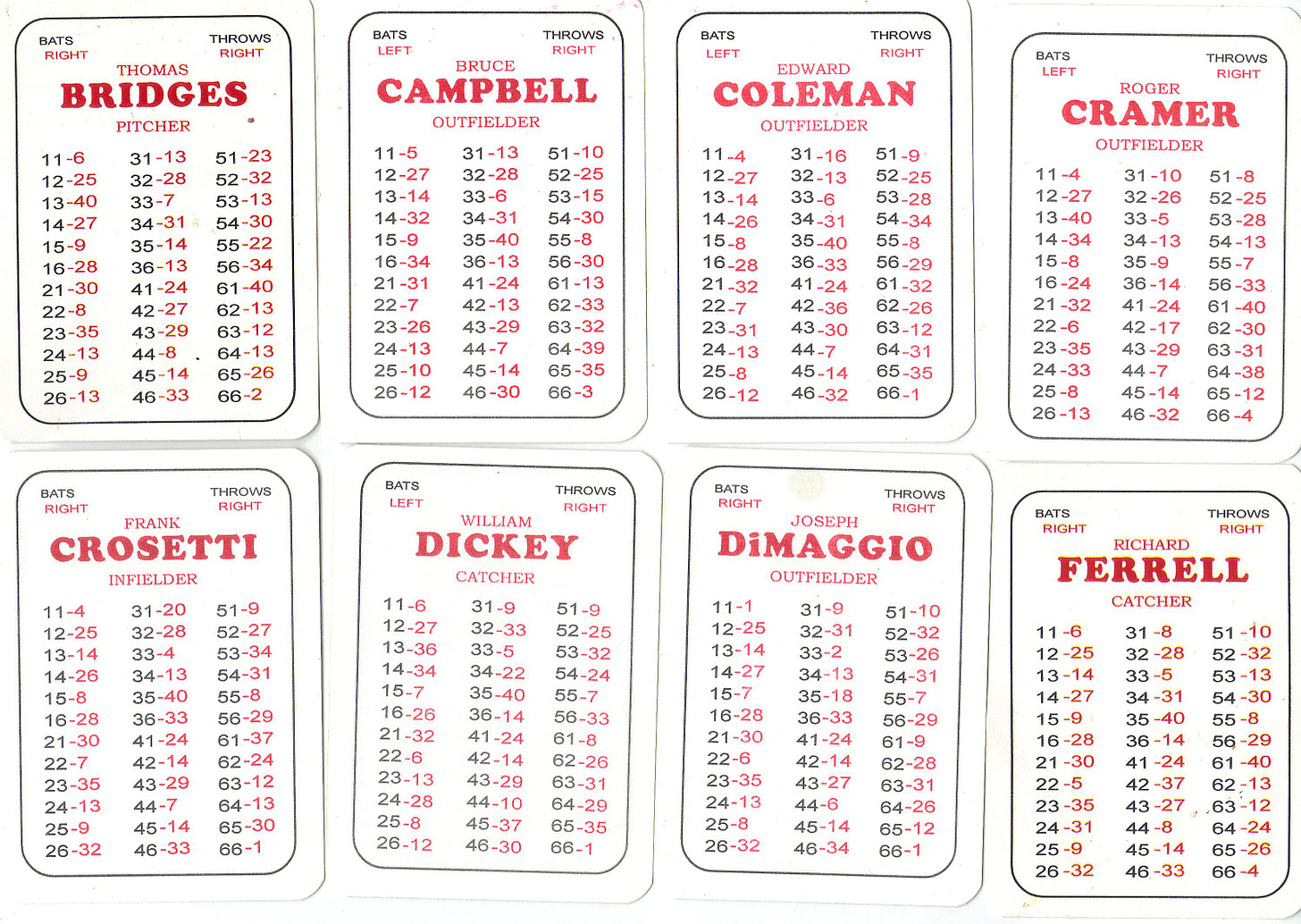More Seitz Homebrew Cards
Let’s take a closer look at the J. Richard Seitz National Pastime homebrew cards.
A reader sent me scans of 40 of these cards. I think there are at least 40 more out there. Unfortunately, I do not have physical copies of the reprinted versions of these cards.
However, there are enough cards here to make a few quick notes.
Which Season Were These Based On?
When we looked at Bill dickey and Dick Ferrell last time, we speculated that their cards might have been based on the 1936 season.
That might be the case here, but it’s not clear. Look at Hank Greenberg’s card, for example:
By my calculations, Greneberg should hit .355 with this card. If he’s given 660 plate appearances, he’ll probably hit 34 doubles, 17 triples, and 41 home runs.
This is actually a pretty good match to several Greenberg seasons in real life — most lkely 1935 or 1937:
However, the high expected batting average (.355) makes me wonder if Seitz didn’t create this card based on his 55 plate appearances in 1936 — or maybe even a combination of years.
Here’s what Joe DiMaggio looks like:
By my calculations, if given 660 plate appearances, Joltin’ Joe should hit about .333 with 35 doubles, 18 triples, and 39 home runs.
This is a pretty good match to Joe’s 1936 season, although the home runs are a tad too high:
Finally, here’s the card for Cecil Travis:
By my count, Travis should hit about .355 with 39 doubles, 12 triples, and 4 home runs. This seems like a cross between his 1936 and 1937 seasons:
While I haven’t finished looking at all of these cards, I do think it’s pretty safe to say that they were created somewhere around 1937 or 1938. I’ll have more to say on this in a later post, once I’m done fully comparing everybody.
Did Seitz Know the Clifford Van Beek Patterns?
If you remember, we talked a few months back about how Clifford Van Beek used different model cards for right handed and left handed batters.
Here’s what he used for lefties:
And here’s what he used for righties:
This would have been difficult to deconstruct in the 1930s. Without spreadsheet software, it would have required somebody to perform the tedious task of transcribing 36 numbers for all 280 players by hand on paper. You’d then have to basically guess that the batter’s handedness would be a determining factor for the patterns. And, as I’ve mentioned earlier, Van Beek’s habit of randomly mixing up numbers would have made this especially difficult.
Though we don’t quite have enough cards to tell for sure, there is a little bit of evidence that Seitz might have known something was going on. Here are his players that either hit left handed or “both”:
Some of the out numbers are on, but there’s also some strange stuff going on. Lefty Gomez getting a 20 on dice roll 15 is pretty brutal, for example.
Here’s what the right handed hitters look like:
Seitz got a few of the numbers right, but others seem off. 14, for example, seems to have been basically a random dice roll for Seitz.
I suspect that Seitz might have based his cards off of existing cards, making only a few modifications to hit numbers to recreate the extra base hits and batting average. In other words, I’m confident that Seitz did not perform the same sort of spreadsheet analysis we have.
We’ll continue this look in a future post, after which we’ll start looking at how National Pastime turned into APBA.
If you have scans of more Seitz homebrew cards, please drop me a note.















Seitz's cards weren't all produced at the same time; they accumulated over the years as new players came up and older ones disappeared. George "Kiddo" Davis, for example, has a card based on 1932 or 1933 (or both), judging from his 11, though none of his career explains the 4-4-5-6-6 power. (The reissues are uniform in style because they were all produced at the same time. circa 2001. by AJ Publishing. They were never part of Sports Game Publishing's slightly earlier NP reprint, though most of the people who bought the Seitz cards undoubtedly owned that set.)